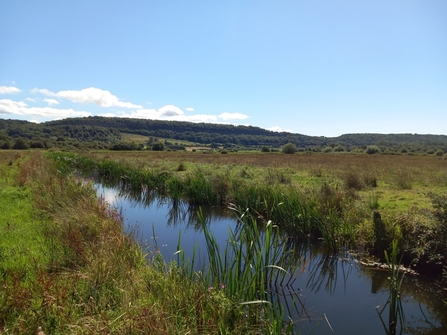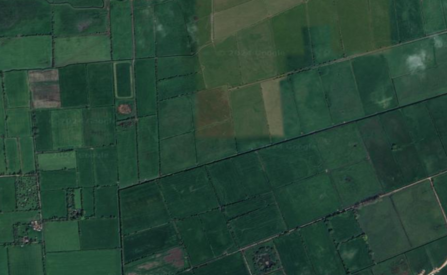You’ve probably heard of peat or peatlands. You may have even visited some of Avon Wildlife Trusts lowland peatland reserves, such as Weston Moor or Clapton Moor in the beautiful North Somerset Levels and Moors. In recent years, there has been a new focus to protect and restore peatlands across the UK. This includes calls for a government-based ban on sales of peat, and a raft of peatland conservation projects being announced. We have recently launched our Somerset Moor Futures project which aims help protect peatland and work with local farmers and landowners.
Peat Power

(c) Frankie Clinch
What is peat?
There are two things it is essential to know about peat. Firstly, it forms very, v-e-r-y slowly (more on that below). Secondly, due to the particular way it forms, it is among the most carbon-rich ecosystems on Earth, storing twice as much carbon as the world’s forests. Yet these precious peatlands occupy only 3% of the global land surface, but cover a whopping 12% of the UK land area, meaning we have a lot of it!
In good condition, peatlands have a net cooling effect on climate, reduce flood risk, and support biodiversity. Healthy peatlands can reduce flood risk by slowing the flow of water from the uplands, and by providing floodplain storage in the lowlands. They also provide important nesting and feeding grounds for many wading birds, as well as important habitats for rare insects, amphibians and plants.
However, when peatlands are drained and start to degrade, all these benefits are lost, and they shift from being a carbon store to a carbon emitter! This issue has been recognised by the UK government, through the establishment of the Lowland Agricultural Peat Taskforce.
The Taskforce is charged with finding viable, economically sound ways to protect peat, in their first ad report1, published June 2023, they said that:
“Peat is one of our most important natural assets. Healthy peatlands store carbon, help to control flooding, reduce the risk of wildfire and drought, act as a natural water filter and provide habitat for rare and unusual plants, birds and insects. However, England’s lowland peat soils are among the largest sources of greenhouse gas emissions in the land-use sector, accounting for 3% of England’s overall greenhouse gas emissions and 88% of all emissions from peat in England.”
How is it formed?
Put simply, peat forms when waterlogged ground conditions prevent dead plant material from fully decomposing.
It’s also a recent(ish) thing. At the end of the last ice-age, 10,000 years ago, there wasn't any peat in the UK at all. Here, on the North Somerset Levels and Moors, it all started when the final glaciers melted, leaving behind wide, clay-lined valleys. As sea levels dropped and stabilised (around 6,500 years ago), saltwater reeds began to colonise the wetter valley bottoms. Over time, these became huge reed swamps, and as plants died and fell into the water, the anaerobic (oxygen-deprived) and acidic conditions prevented the plants from decaying completely, which also locked-in the carbon within them. This was the start of the peat forming. The reed swamps eventually gave way to freshwater habitats, supporting mostly sedges and sphagnum mosses. In drier areas, some trees and shrubs also began to colonise, over time adding layers and layers (and layers) of dead organic matter to the peat.
However, peat formation is a sloooooow process - it takes about 1000 years for a depth of 1m to form! It will also only form if there is enough water present to maintain the anaerobic and acidic conditions. It is a specialised, sensitive and rather particular habitat.
People and peat
Humans have recognised the value of peat for centuries. In many areas peatlands have been drained for agricultural use and extracted for fuel or as compost for gardeners.
Whilst commercial peat extraction for fuel is quite rare nowadays, the UK does still have large-scale peat extraction for peat compost or peat-containing products, despite calls for a total ban.
Ditches and gases
As peatland exists in areas which are prone to waterlogging, to keep it dry enough for use as agricultural land or for peat extraction it has to be drained. This is mainly achieved through digging ditches and pumping out the water. These ditches (known as ‘rhynes’ in Somerset or ‘dykes’ in East Anglia) act like wet hedgerows, and are emblematic of these areas – below you can see the elaborate and extensive watery networks criss-crossing the North Somerset Levels and Moors landscape.

Image : Google Earth
Unfortunately, herein lies the problem. Draining the peat lowers the water table, allowing oxygen into the soil, and this restarts the process of decomposition. As the plant matter rots away, the stored carbon is released as CO₂, methane or nitrous oxide (N₂O), all of which are major greenhouse gasses and causes of climate change.
At Avon Wildlife Trust we are working to protect and restore peatland across the region. Our Somerset Moor Futures Project is one of 13 lowland agricultural peat water discovery projects being delivered across the country funded by the Environment Agency.


